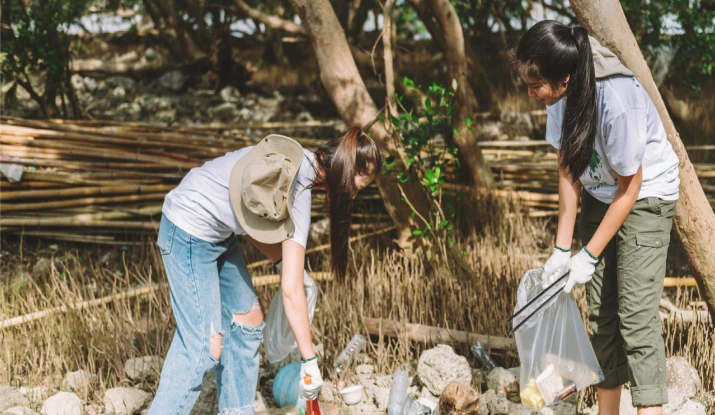Catastrophes negatively impact communities since they destroy many structures, residents’ shelters, and the environment. Such incidents usually leave the residents in disarray, dazed, and confused after the calamity. For communities to get back to normalcy, there are several comprehensive cleanup processes in several significant phases that they have to undergo.
Sometimes, disaster can strike, and confusion is the only thing that reigns; recognizing and embracing these phases will help bring order and structure to any restoration work that follows. This blog post will uncover the stages of natural disaster restoration: mitigation, immediate response, and recovery.
All of them are crucial in rebuilding communities and managing the risks in the future and for those affected. Understanding these phases allows us to comprehend and further the resilience needed to assist with the disaster cleanup and restoration process after the calamity.
What is Natural Disaster Restoration?
Natural disaster restoration is simply the process by which communities affected by natural disasters are returned to their original state. This refers not only to the need to clean up but also to the emotional and communal sense. Restoration refers to clearing debris, rewiring, rebuilding, and offering services to the affected persons and households. It is a proactive one that involves governmental and non-governmental organizations, as well as local communities.
Relief and recovery goals focus on reducing the impacts of disasters, improving adaptive capacities, and promoting sustainable recovery processes. All phases of restoration are created to meet specific needs and identify issues that may occur after an inevitable natural disaster.
Natural Disaster Restoration Phases
When followed correctly, the natural disaster restoration process can lessen the impact of a calamity. It can also incorporate the policies and emergency actions needed for a recovery. This entire cycle involved the following four stages:
1. Mitigation
Mitigation means the minimalization of the effects of future catastrophes. This can include building codes, improving people’s infrastructure, and increasing the number of park-like areas that can help reduce the amount of stormwater runoff.
Timelines: This means that strategies are usually continuous and can take place at some time before a disaster strikes. For instance, local governments take years to revise building codes or design public awareness programs.
Examples: That is why many coastal cities adopted new and higher zoning standards and spent millions to enhance the systems of levees after Hurricane Katrina.
2. Preparedness
Awareness can be explained by planning and training activities that would enable communities to deal with situations when disaster occurs. This consists of designing contingency procedures and rehearsing and creating all HCW’s information management networks.
Timelines: Disaster preparedness as an activity is a process that should not begin at the time of actual disaster and should, therefore, be subject to periodic review and refinement.
Examples: In many places, people have evacuation drills at least once a year to familiarize everyone, including first aiders and citizens, on how to go about the eventuality of an earthquake flood, among other disasters.
3. Response
The response phase includes activities taken soon after the event to mitigate the impacts of a disaster. These include searching and rescuing efforts, providing temporary shelter, and restoring infrastructure such as electricity and water.
Timelines: This phase usually takes a few days to a few weeks and starts immediately after disaster or harm.
Examples: After the 2011 Joplin tornado, emergency responders provided makeshift shelter commodities and continually repaired power and communication infrastructure during the night.
4. Recovery
Rehabilitation, in the context of this paper, is the process of bringing or developing a community to a state that is better than its current status. This may include building and repairing houses and other structures, offering therapy, and looking at methods for creating employment again.
Timelines: Recovery can take months to even years, depending on the severity of the disaster and how much resources were put into the natural disaster reconstruction process.
Examples: In the subsequent years, after the 2004 Indian Ocean Tsunami, many countries underwent a process of reconstruction that took several years to complete because it involved rebuilding houses and fishing industries and initiating reactive measures on disaster risk reduction.
Who Performs the Natural Disaster Cleanup Process?
Many companies that offer disaster restoration services possess tools and the appropriate knowledge to restore the area quickly. Some of the services these companies have to provide are debris removal, structural repair, and environmental rehabilitation.
Using a professional service provider guarantees that the cleaning process will occur compliant with all local codes and recommends practices for restoration. These firms should also employ superior technology and human resources to enhance recovery standards, thus enabling communities to return to their everyday lives faster.
Frequently Asked Questions
What measures should one take after a natural disaster strikes?
The first step after a disaster is always to consider your safety and then the safety of others. Don’t get into the structures that have been affected by the catastrophes. Contact any professional natural disaster restoration company to seek help.
How long does it take for restoration to be completed on a house?
Whereas the response may require days, weeks, or even months, the recovery may last for months to years.
What measures can be taken to ensure my house is ready for a natural disaster?
To prepare your home, have an emergency plan, build an emergency kit, and consider strengthening your home against disasters consistent with where you live.
Will a particular community be able to get financial aid regarding disaster recovery?
Of course, there are many governmental and non-governmental ways through which financial help is offered for disasters. One must consult local authorities and agencies involved in disaster management to identify available resources.
Make the most out of our expert cleaning services to get your property back in shape – no matter the damage



